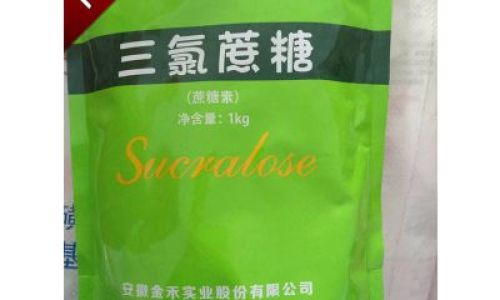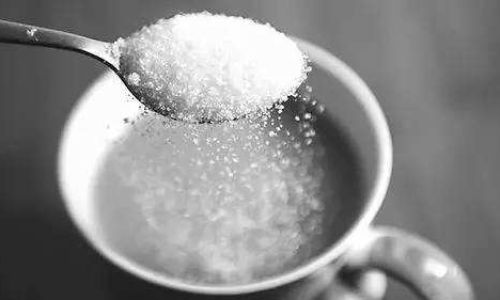Introduction

In the vast landscape of food additives and sweeteners, one substance stands out for its unique properties and widespread use: sucralose. This artificial sweetener has become a staple in many households, food products, and beverages due to its intense sweetness and stability under various conditions. But what exactly is sucralose, and how does it differ from other sweeteners on the market? This article aims to provide a comprehensive understanding of sucralose, exploring its origins, chemical structure, properties, uses, safety concerns, and environmental impact. By the end, readers will have a clear picture of why sucralose has become such a popular choice for both consumers and manufacturers.
Origins and Discovery
Sucralose was discovered in the late 1970s by a team of scientists at Tate & Lyle, a British company specializing in food ingredients. The research was initially aimed at creating a new insecticide, but the compound they synthesized, later named sucralose, showed promising sweetening properties instead. Unlike many other sweeteners discovered through serendipity, the development of sucralose was somewhat intentional, albeit with a different initial purpose.
The scientists modified sucrose (common table sugar) by replacing three hydroxyl groups with chlorine atoms. This chemical alteration resulted in a compound that was several hundred times sweeter than sucrose but had a different molecular structure that made it more stable under various conditions, including heat and pH changes. This discovery marked the beginning of sucralose’s journey from a laboratory curiosity to a globally recognized sweetener.
Chemical Structure and Properties
Sucralose’s chemical name is 1,6-dichloro-1′,6′-dideoxy-β-D-fructofuranosyl-4-chloro-4-deoxy-α-D-galactopyranoside. Its molecular formula is C12H19Cl3O8, and its molecular weight is 397.64 g/mol. The three chlorine atoms attached to the sucrose molecule are crucial for sucralose’s sweetness and stability. These chlorine substitutions prevent the compound from being metabolized by the human body, which means it passes through the digestive system without being absorbed or broken down.
One of the most remarkable properties of sucralose is its high sweetness intensity. It is approximately 600 times sweeter than sucrose, allowing manufacturers to use very small amounts to achieve the desired sweetness level. This high intensity makes sucralose particularly suitable for low-calorie and sugar-free products, as it allows for significant reduction in calorie content without compromising taste.

In addition to its sweetness, sucralose is also known for its stability. It remains stable under a wide range of temperatures and pH levels, making it ideal for use in various food and beverage applications. Unlike some other sweeteners, sucralose does not lose its sweetness when heated, nor does it react with other food components to form off-flavors or colors.
Uses in Food and Beverages
Due to its unique properties, sucralose has found widespread use in the food and beverage industry. It is commonly added to sugar-free products such as sodas, candies, yogurts, and baked goods. Its high sweetness intensity allows manufacturers to reduce the calorie content of these products while maintaining a pleasant taste.
Sucralose is also used in various dietary and medical products. For example, it is often found in diabetic-friendly foods and beverages, as it does not raise blood sugar levels. It is also used in products designed for weight management, as it can help reduce overall calorie intake without sacrificing taste.
In addition to its use in consumer products, sucralose is also used in industrial applications. It is used as a sweetening agent in some pharmaceuticals, cosmetics, and personal care products. Its stability and non-reactive nature make it a suitable choice for these applications, as it does not interfere with the formulation or performance of the final product.
Safety Concerns
The safety of sucralose has been a topic of debate since its discovery. Many consumers and health experts have questioned its potential health effects, particularly given its artificial nature and the fact that it is not metabolized by the human body. However, numerous studies have been conducted to assess the safety of sucralose, and the overall scientific consensus is that it is safe for human consumption.

The U.S. Food and Drug Administration (FDA) approved sucralose for use as a food additive in 1998. The agency conducted a thorough review of the available scientific data and concluded that sucralose is safe for use in a variety of food and beverage products. The FDA set an acceptable daily intake (ADI) level of 5 milligrams per kilogram of body weight per day, based on the results of toxicity studies.
Similar conclusions have been reached by other regulatory agencies around the world, including the European Food Safety Authority (EFSA) and the Joint FAO/WHO Expert Committee on Food Additives (JECFA). These agencies have conducted their own reviews of the scientific literature and have found no evidence to suggest that sucralose poses a health risk to consumers.
Despite the overall scientific consensus on the safety of sucralose, some concerns remain. Some studies have suggested that sucralose may have adverse effects on gut bacteria, although these findings are not consistent and have been subject to debate. Additionally, some consumers may have individual sensitivities or allergies to sucralose, although this is relatively uncommon.
Environmental Impact
The environmental impact of sucralose is another area of concern. As a chlorinated compound, sucralose is resistant to degradation in the environment and can persist in soil and water for extended periods. This persistence has led to concerns about its potential to accumulate in the food chain and affect wildlife.
Studies have shown that sucralose can be detected in wastewater treatment plants, rivers, lakes, and even ocean waters. While the concentrations of sucralose in these environments are typically low, the cumulative effects of long-term exposure are not fully understood. Some researchers have suggested that sucralose may disrupt the hormonal balance of aquatic organisms, although this remains an area of active research.
Efforts are being made to address the environmental impact of sucralose. Manufacturers are exploring new methods for the disposal and recycling of sucralose-containing products, and researchers are working on developing biodegradable alternatives to sucralose. Additionally, regulatory agencies are monitoring the environmental presence of sucralose and are considering new regulations to limit its release into the environment.

Conclusion
Sucralose is a high-intensity sweetener that has become a staple in many food and beverage products due to its unique properties and widespread use. Its discovery was somewhat intentional, albeit with a different initial purpose, and its chemical structure and properties make it an ideal choice for low-calorie and sugar-free products. Despite some concerns about its safety and environmental impact, the overall scientific consensus is that sucralose is safe for human consumption within the recommended ADI levels.
As with any food additive, consumers should be aware of the potential risks and benefits of sucralose and make informed decisions about its use in their diets. Manufacturers and regulatory agencies also have a responsibility to ensure the safety and sustainability of sucralose-containing products, and to explore new methods for reducing its environmental impact. By working together, we can ensure that sucralose continues to be a valuable addition to our food supply while minimizing any potential risks to human health and the environment.






0 comments